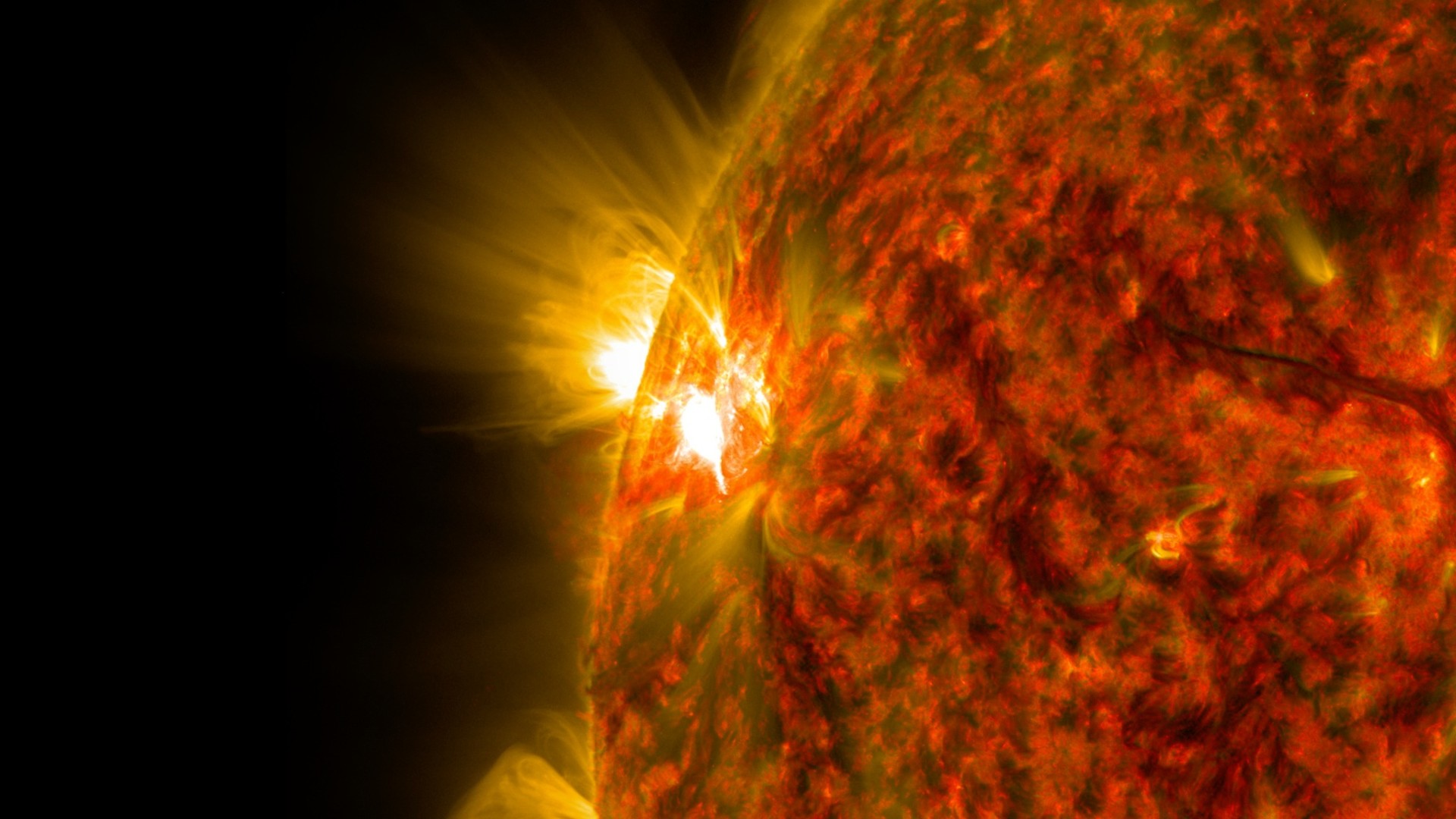Whip-cracking burst of energy from sun could explain solar wind
This could explain how solar wind can accelerate even when far away from the sun.

Scientists have captured the first direct evidence of the sun's magnetic field quickly switching directions, which could help explain the mysterious force that flings particles across our solar system.
The researchers observed the phenomenon using the Solar Orbiter probe, which was developed by the European Space Agency (ESA) and is jointly run with NASA. The probe, which launched into close orbit around the sun in February 2020, first spotted the abnormality in our star's magnetic field in March this year. Using its Metis coronagraph to block out the glare of the sun's disk and focus on its edges, the probe captured images of a puzzling S-shaped bend in the tendrils of wispy plasma streaming out from the sun's corona, or upper atmosphere.
The scientists say the S-shaped kink is evidence of the sun's magnetic field suddenly reversing — a long-hypothesized process known as a magnetic switchback. Previously, spacecraft such as the Helios 1 and 2 probes and NASA's Parker Solar Probe have detected indirect evidence of switches in the sun's magnetic field, but this is the first time that direct and visible evidence of a switchback has been captured. The researchers published their findings Sept. 12 in The Astrophysical Journal Letters.
"I would say that this first image of a magnetic switchback in the solar corona has revealed the mystery of their origin," lead author Daniele Telloni, an astrophysicist at the National Institute for Astrophysics’ Astrophysical Observatory of Torino in Italy, said in a statement.
The Solar Orbiter photographed the kink on March 25, just a day before it performed a close flyby of the sun that brought the probe within Mercury's orbit. After comparing the image with a concurrent one taken of the sun's surface, the scientists realized that the S-shaped kink had appeared above a sunspot.
Sunspots are cooler, dark patches on the sun where powerful, knotted magnetic fields are created by the flow of the sun's electrically charged plasma. These fields, in turn, can affect plasma in variable ways, depending on if they form open or closed loops.
Sign up for the Live Science daily newsletter now
Get the world’s most fascinating discoveries delivered straight to your inbox.
Closed magnetic fields emerge from one point on the sun's surface and dive back in at another, forming huge, looping arcs of electrified gas above the star. When these filaments collapse, they can release bursts of radiation called solar flares and fire explosive jets of solar material called coronal mass ejections (CMEs). Open magnetic field lines behave in a different way; they stretch far out into space and link up with the solar system's magnetic field, creating a high-speed interplanetary highway across which particles from the sun (the solar wind) can stream for billions of miles.
On planets that have strong magnetic fields, like our own, the planet’s magnetic field, or magnetosphere, absorbs the barrage of solar debris from the solar wind, triggering powerful geomagnetic storms. During these storms on Earth, waves of highly energetic particles slightly compress our magnetic field. The particles then trickle down magnetic-field lines near the poles and agitate molecules in the atmosphere, releasing energy in the form of light to create colorful auroras, such as the ones that make up the Northern Lights.
The researchers think that switchbacks take place above sunspots where closed field lines break and connect with open ones. Much like cracking a whip, this releases a burst of energy as the S-shaped switchback is sent out into space.
The proof that these switchbacks exist could help scientists to understand how pockets of solar wind are able to accelerate and heat up even when they are far away from the sun.
"This is exactly the kind of result we were hoping for with Solar Orbiter," Daniel Müller, ESA project scientist for Solar Orbiter, said in the statement. "With every orbit, we obtain more data from our suite of ten instruments. Based on results like this one, we will fine-tune the observations planned for Solar Orbiter's next solar encounter to understand the way in which the Sun connects to the wider magnetic environment of the Solar System. This was Solar Orbiter's very first close pass to the Sun, so we expect many more exciting results to come."
Originally published on Live Science.

Ben Turner is a U.K. based staff writer at Live Science. He covers physics and astronomy, among other topics like tech and climate change. He graduated from University College London with a degree in particle physics before training as a journalist. When he's not writing, Ben enjoys reading literature, playing the guitar and embarrassing himself with chess.









